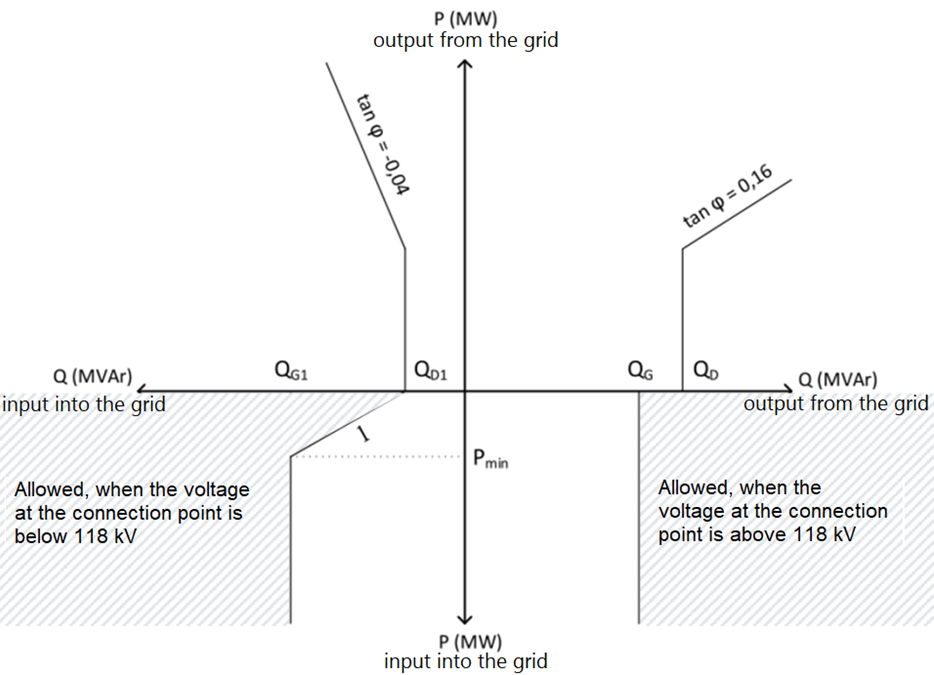Main grid contract and service fees
Transmission in the main grid
Electricity transmission is agreed upon by means of a main grid contract before the main grid connection is commissioned and energized. The contract requires the technical terms for the main grid connection to be fulfilled and the customer to have a valid connection agreement and an open electricity supplier agreement.
The main grid contract is used to agree on the customer’s rights to transfer electricity from and to the main grid via its connection points, service terms and prices, supply of reactive power, maintenance of reactive power reserves, and real-time information exchange related to maintaining system security. The main grid contract can be signed after the terms of main grid connection have been agreed with the customer in a connection agreement.
Guidelines
Part of the main grid contract are the supply of reactive and real-time information exchange application guidelines. The supply of reactive guideline is applied for the supply and monitoring, and for calculating the supply limits, of reactive power transmitted via the Customer’s connection points in the main grid. The guideline additionally specifies the requirements of how to maintain reactive power reserves in generators. The real-time information exchange shall be applied to the real-time information exchange related to the maintenance of system security and to the technical implementation and definition of real-time information exchange.
Reactive power
Reactive power is delivered and received in the customer’s connection point or connection points. The aim of the reactive power tariff is to guide the use of reactive power optimally, considering technical aspects such as transmission capacity. Power exceeding the reactive power limits is invoiced.

Figure. The reactive power window determines the amount of reactive power delivered to and received from the main grid without separate compensation for each connection point.
The operation and maintenance of the reactive power is agreed in the Main Grid Contract Appendix 1 Main Grid Service Terms and Conditions (KVPE2020) and in the Supply of Reactive Power and Maintenance of Reactive Power Reserves guideline.
Real-time information exchange
The scope of real-time information related to maintenance of main grid system reliability is agreed separately with each customer by taking system security of the electricity system into consideration. The real-time measurement and state information must be available in Fingrid’s operation control system when a new power plant or substation is connected to the electricity network.Real-time information exchange is agreed upon in the main grid contract and the information exchange guideline.
| Fees €/MWh (excl. VAT) | 2023 | 2022 |
|---|---|---|
| Consumption fee, winter weekday *) | 8,96 | 8,96 |
|
Consumption fee, other times |
2,55 | 2,55 |
|
Fee for output from the main grid |
0,92 | 0,92 |
|
Fee for input into the main grid |
0,61 | 0,61 |
|
Generation capacity fee for power plants |
162,00 MW/month 1944,00 €/MW/a |
162,00 MW/month 1944,00 €/MW/a |
| Energy fee for short operating times **) | 3,26 | 3,26 |
| Reactive power fee Mvar/month |
1 000,00 |
1 000,00 |
| Reactive energy fee, output Mvarh | 5,00 | 5,00 |
| Reactive energy fee, input Mvarh | 5,00 | 5,00 |
**) alternative to generation capacity fee for power plants
The consumption fee is paid for the transmission of the electric energy beyond the connection point located between the customer and Fingrid. The fee is charged both for the winter periods and for other times.
The fee for output and input from the main grid are charged based on the amount of the energy transferred through a connection point.
The power plants directly or indirectly connected to the customer network (exceeding 1 MW net electricity power) pay a generation capacity fee for power plants.
The energy fee for short operating times is charged for the net production instead of the generation capacity fee in case there is an agreement on a power plant for short operating times.
The reactive power fee is charged based on the monthly highest hourly reactive power transmitted through the customer's metering point. Only the part of the reactive power exceeding the reactive power limits of the individual metering point is charged. Also each month, the 50 highest values are omitted from billing altogether.
The reactive energy fee is charged based on the reactive energy, which exceeds the reactive power limits, transmitted through the customer's metering point. The 50 highest hourly values are omitted from billing each month.
Attachments
- Main grid contract 2016
- Appendix 1 Main grid service terms and conditions
- Appendix 2 Grid service pricing 2023
- Grid service fees 2024
- Service pricing structure
- Supply of reactive power and maintenance of reactive power reserves 2021
- Real time information exchange
- Actions related to imbalance settlement when a new electricity generation plant connects to the main grid
